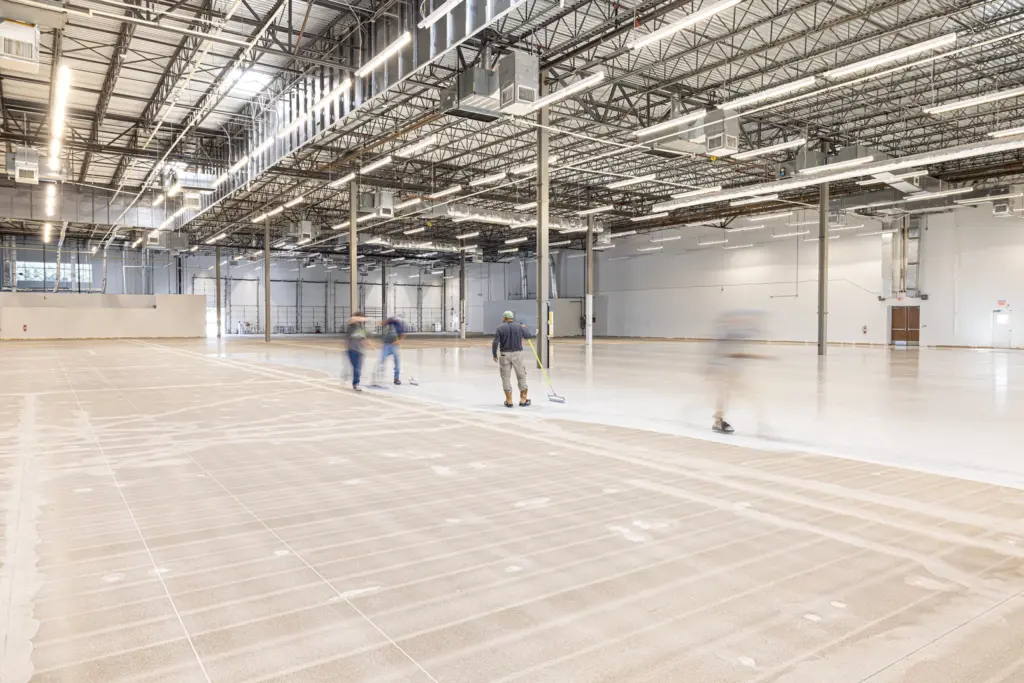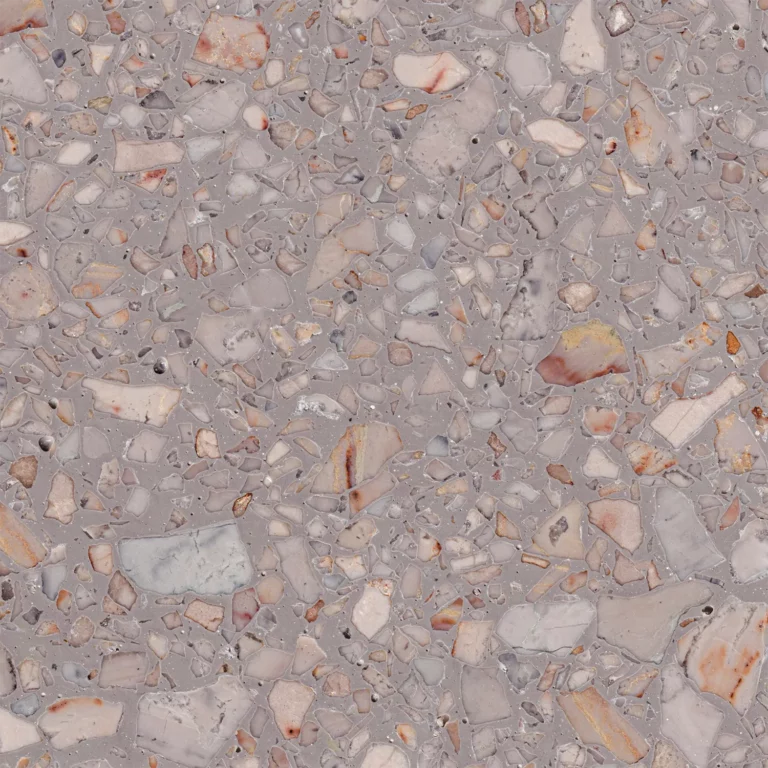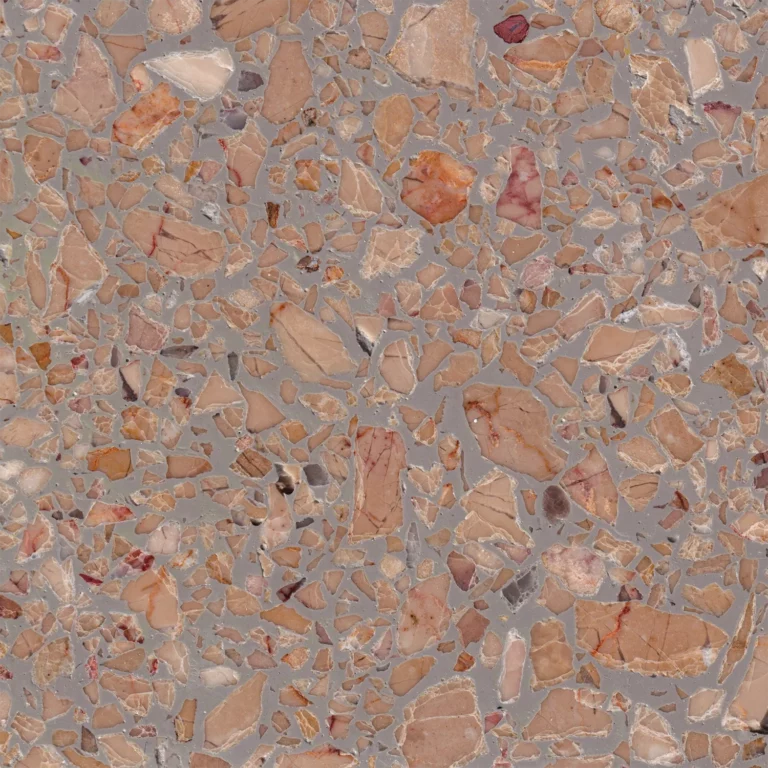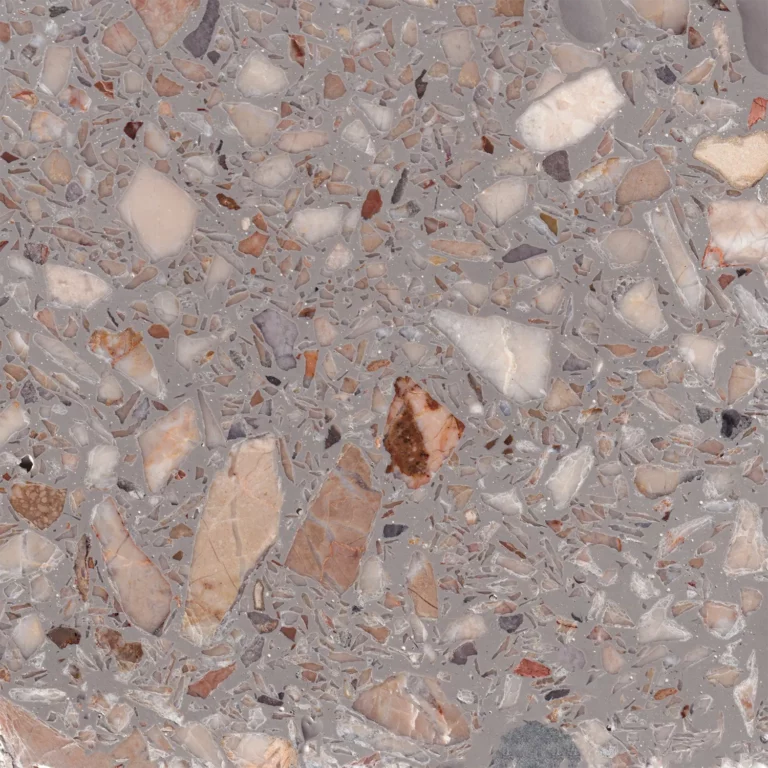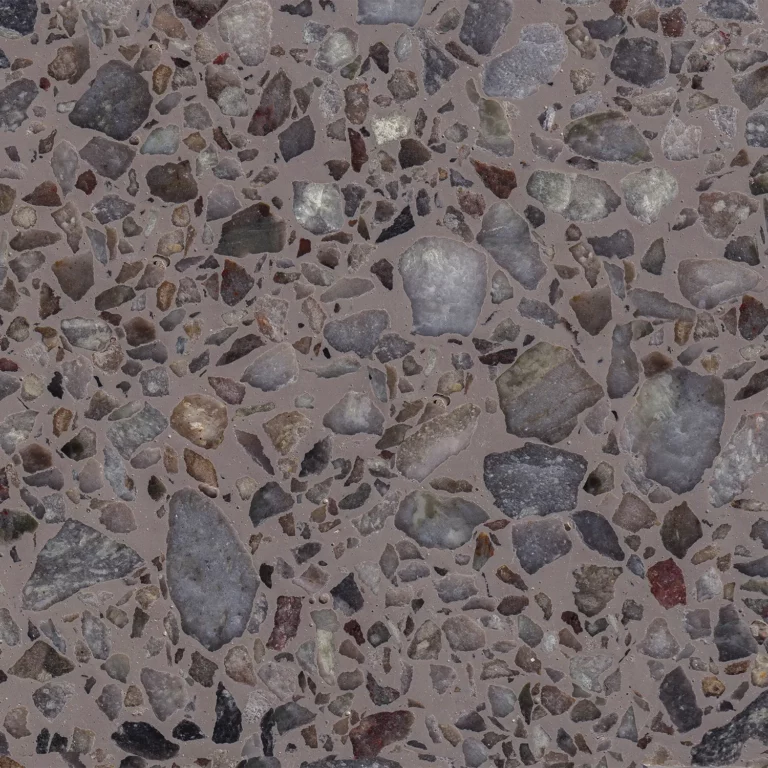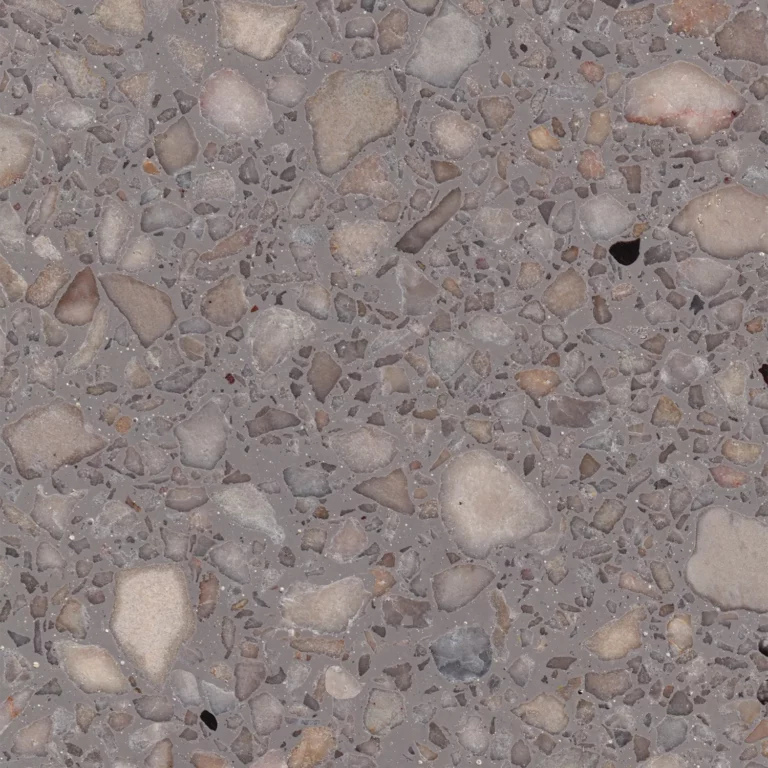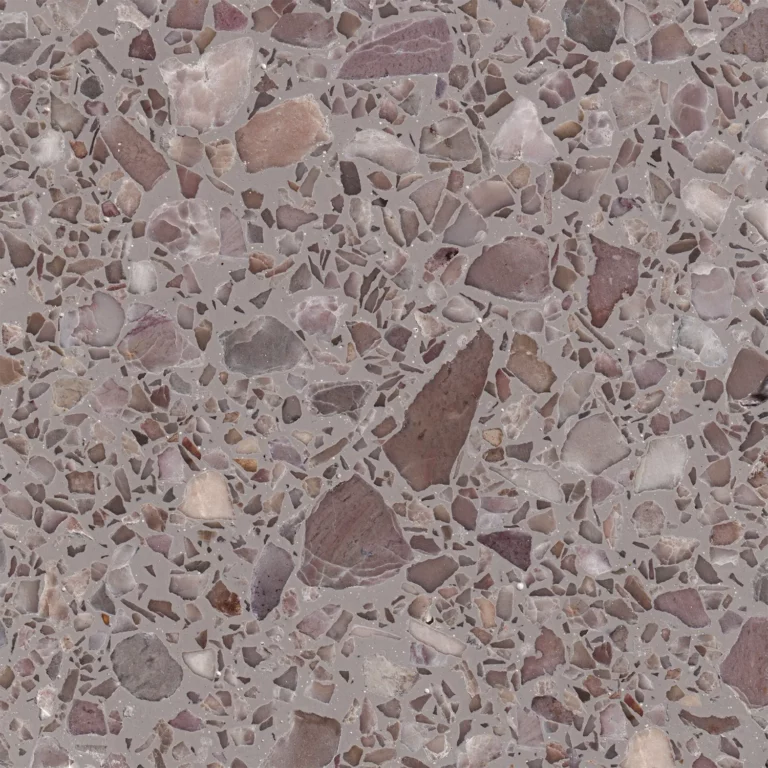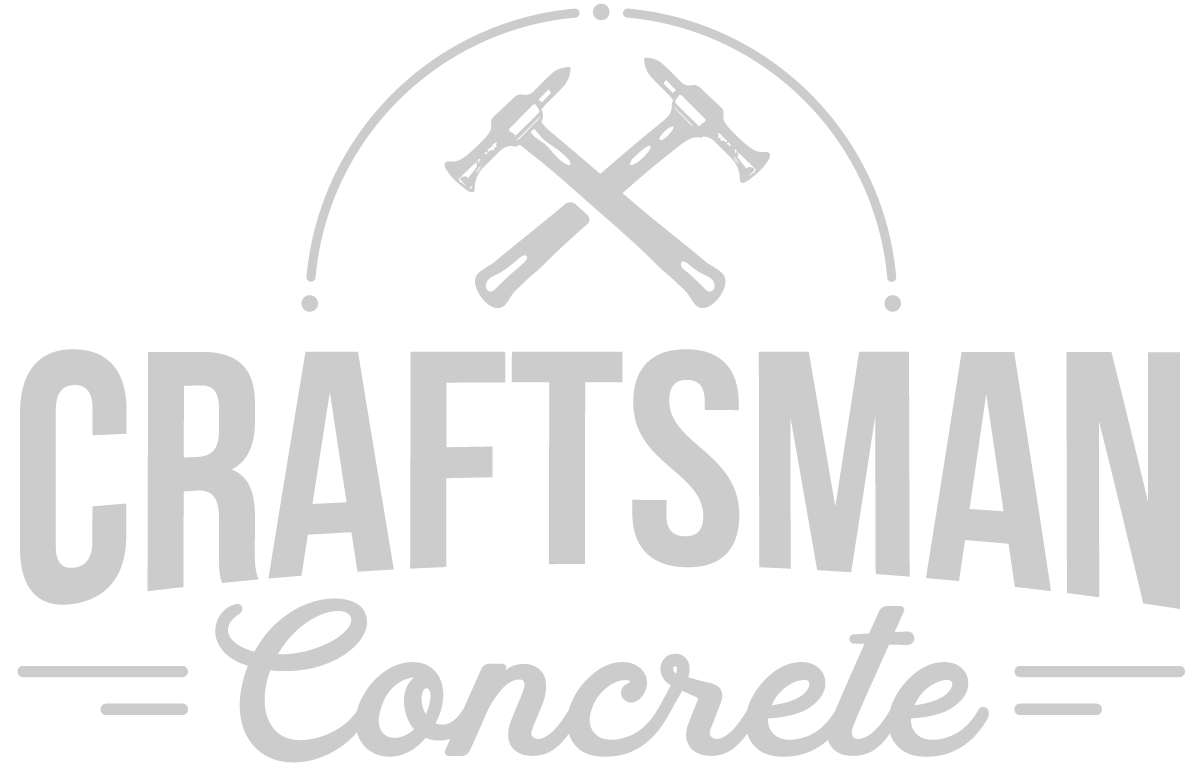Terrazzo Care Guide
Terrazzo floors are renowned for their durability, but like any investment, they require proper care to maintain their beauty over the years. With the right cleaning techniques and maintenance routine, you can preserve the appearance of your terrazzo flooring while ensuring its longevity. This comprehensive guide covers everything you need to know about cleaning, maintaining, and caring for terrazzo floors. When properly maintained and installed, a terrazzo floor should last the life of your building.
Types of Terrazzo Flooring
Terrazzo flooring, first developed in 16th-century Italy, likely originated by accident when stone workers swept marble remnants onto clay soil outside their homes, where foot traffic embedded the chips into the ground. Over time, the process became intentional, with clay replaced by cement to create the first modern terrazzo. By the 20th century, cement was largely replaced with epoxy resin as a binder, offering superior functional benefits and durability.
Epoxy Based Systems
Epoxy-based thin-set terrazzo flooring systems can be installed as thin as 1/4″ over suitable subfloors. Their primary advantage is epoxy’s non-porosity, making the floors resistant to stains from liquid spills and requiring minimal maintenance. Routine care involves dust mopping, wet mopping, and occasional stripping and rewaxing if wax is applied.
While a sealer like wax isn’t necessary due to epoxy’s non-porous nature, wax is often used to enhance the depth and vibrancy of the aggregate colors. Polished, non-waxed terrazzo floors require less maintenance but may have a subtler appearance compared to waxed floors.
Cement Based Systems
Cement-based terrazzo flooring, true to its 16th-century Italian roots, has drawbacks for modern use. Its primary limitation is the required thickness, typically over 2″ compared to just 1/4″ for epoxy systems. Additionally, cement’s porous nature makes it prone to staining from liquid spills.
To mitigate staining and wear, cement-based terrazzo requires a topical sealer, necessitating frequent maintenance like stripping and resealing. This increases long-term upkeep and costs compared to epoxy-based alternatives.
Want to Learn More About Terrazzo Floors?
We’re here to guide you through the design of our products. A Concrete Floor Specialist will reach out within one business day.
What’s The Best Cleaner for Terrazzo Floors?
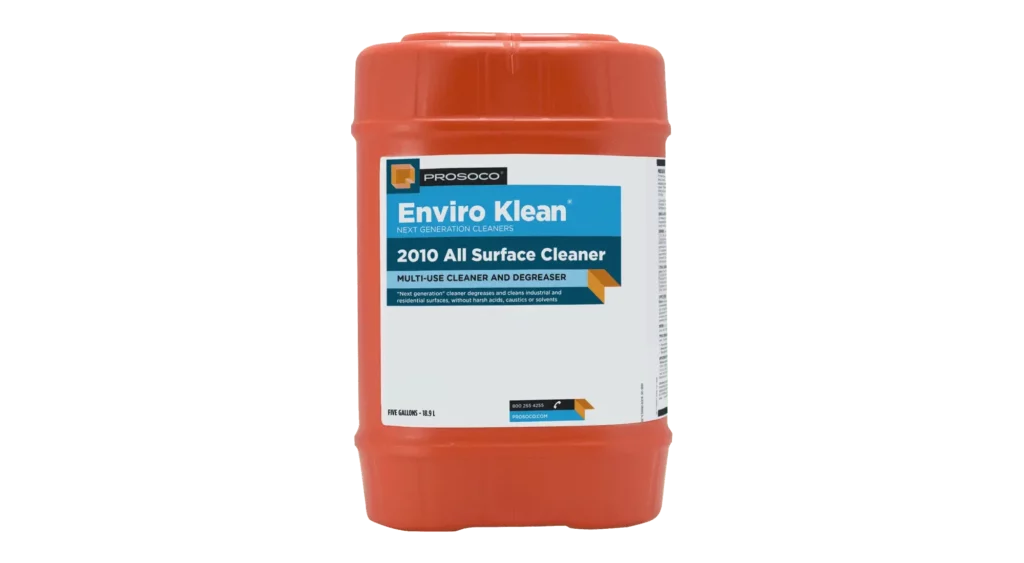
#1 Best Polished Terrazzo Cleaner
Prosoco 2010 All Surface Cleaner
For maintaining terrazzo floors, we recommend Prosoco 2010 all-purpose floor cleaner. This dilutable floor cleaner is suitable for terrazzo, polished concrete, and natural stone floors.
Why Choose This Cleaner?
Prosoco 2010 cleaner is an eco-friendly, non-caustic solution that effectively degreases terrazzo floors. Its residue-free formula enhances safety by reducing slipperiness and helps maintain the floor’s fresh appearance.
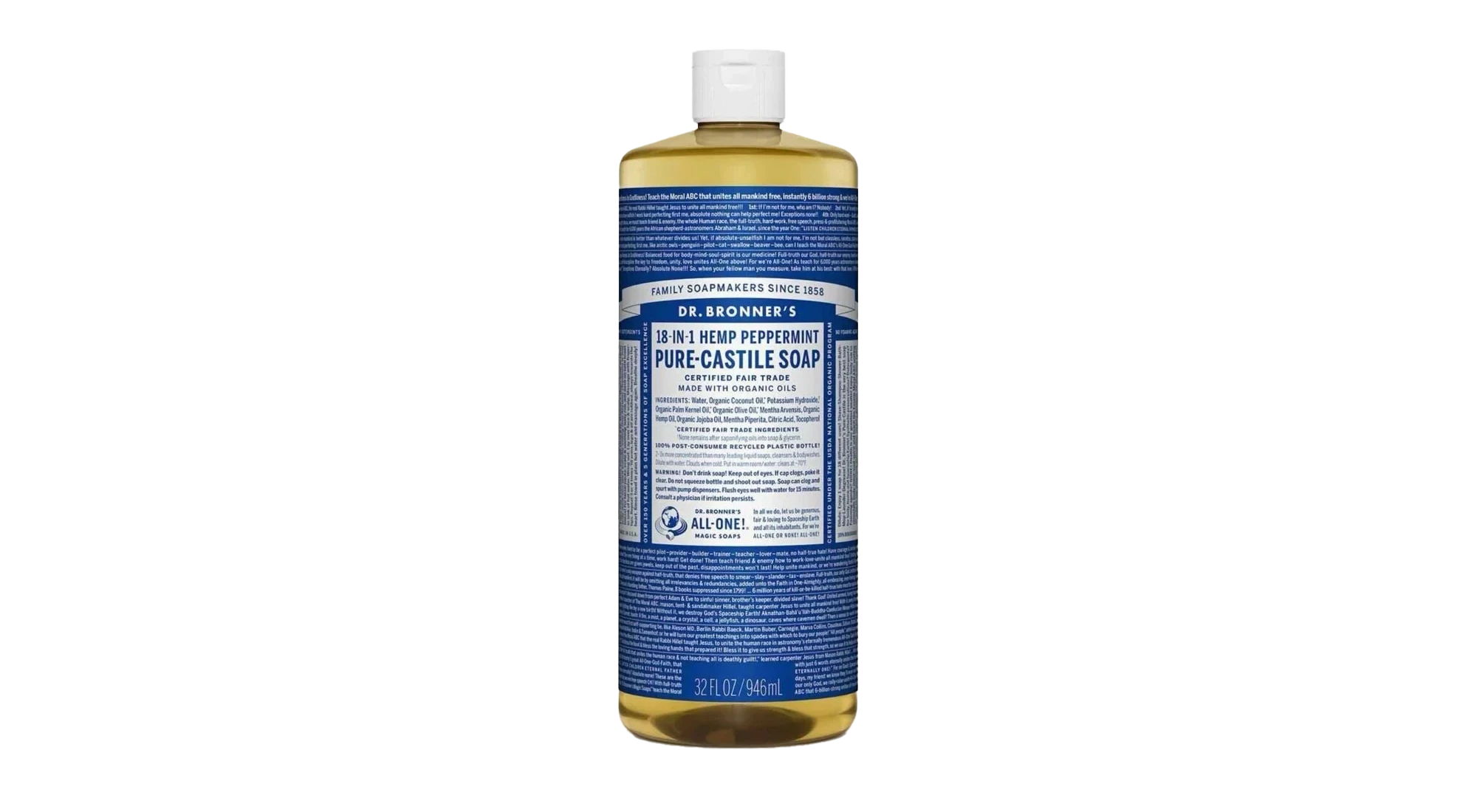
Runnner-UP Terrazzo Cleaner
Dr. Bronners Pure-Castile Soap
Dr. Bronner’s castile soap is our favorite non-specialized product for surface cleaning indoor terrazzo floors. Dr. Bronner’s is a nearly pH-neutral cleaner that comes in a variety of natural scents. Because the soap is concentrated, a few drops in a gallon of water is plenty.
Why Choose This Cleaner?
We like this cleaner because it is readily available at grocery stores, making it easy to find when you need it. It’s also very affordable and comes in a concentrated form, meaning a little goes a long way.
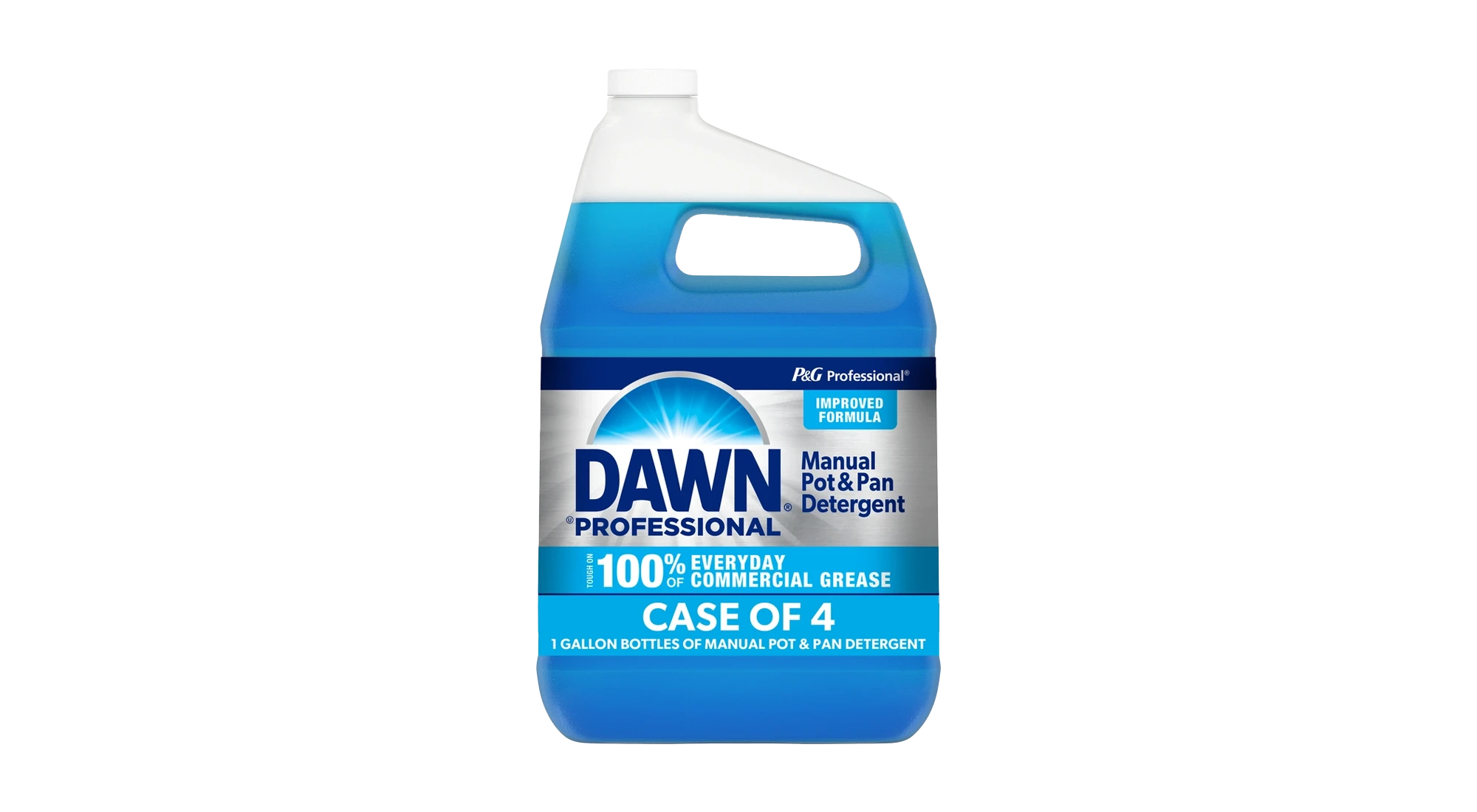
Honorable Mention
Dawn Dish Soap
While Dawn dish soap is effective and safe for cleaning terrazzo floors, its synthetic chemicals and fragrances may pose health concerns. For better safety and performance, we recommend alternative cleaning products.
Why use other cleaners
Dawn contains synthetic fragrances and SLS, which can make it less safe than non-toxic alternatives. It also contains ingredients that can be harmful to the environment, such as triclosan, C9-11 Pareth-8, and methylisothiazolinone.
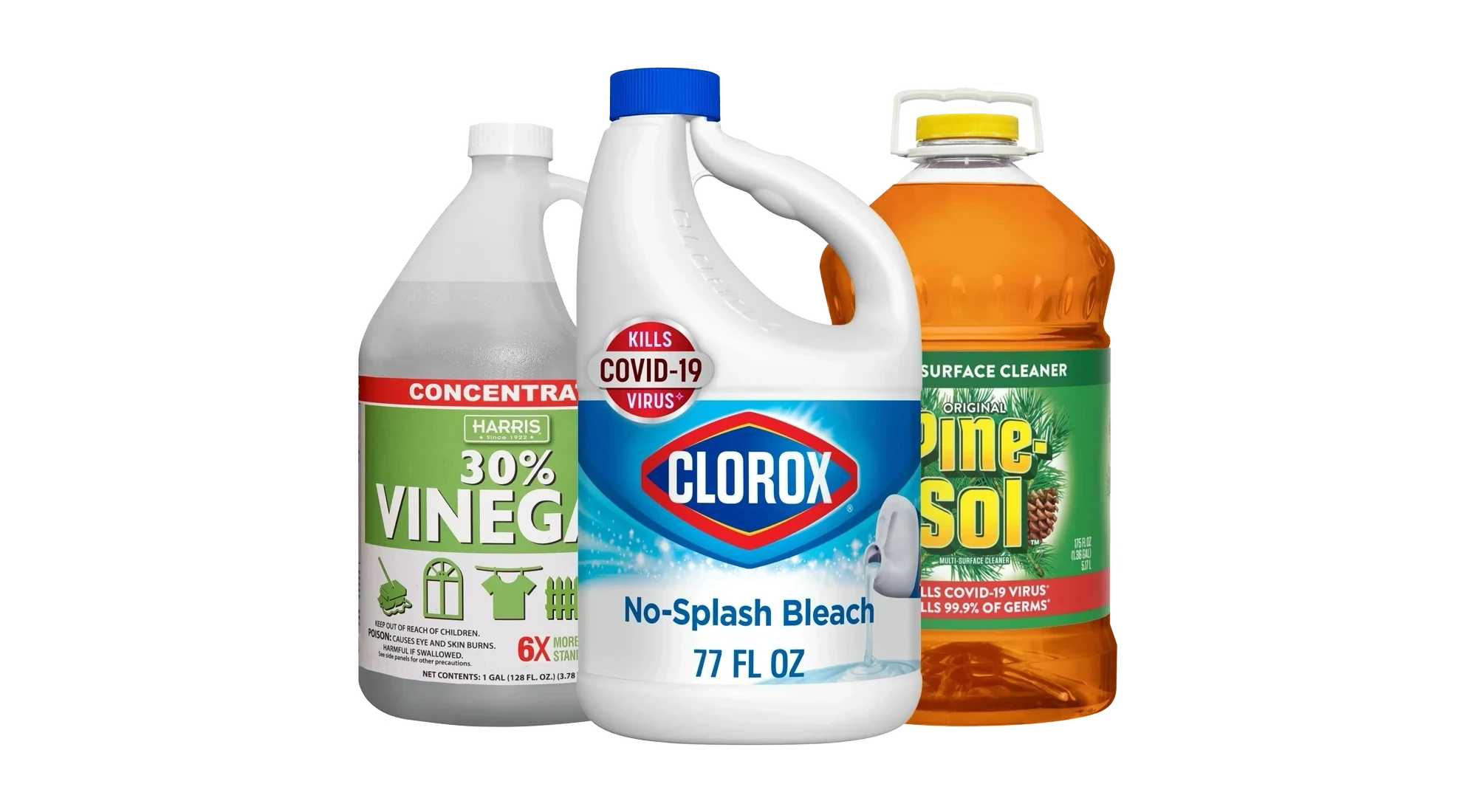
What Not to Use
Never use cleaners such as Pine-Sol, ammonia, vinegar, or bleach
The frequent use of harsh cleaners will greatly reduce the life of your terrazzo floor. Strong chemicals can break down the floor surface, leading to dullness and increased vulnerability to stains. For optimal longevity, always use a gentle cleaner.
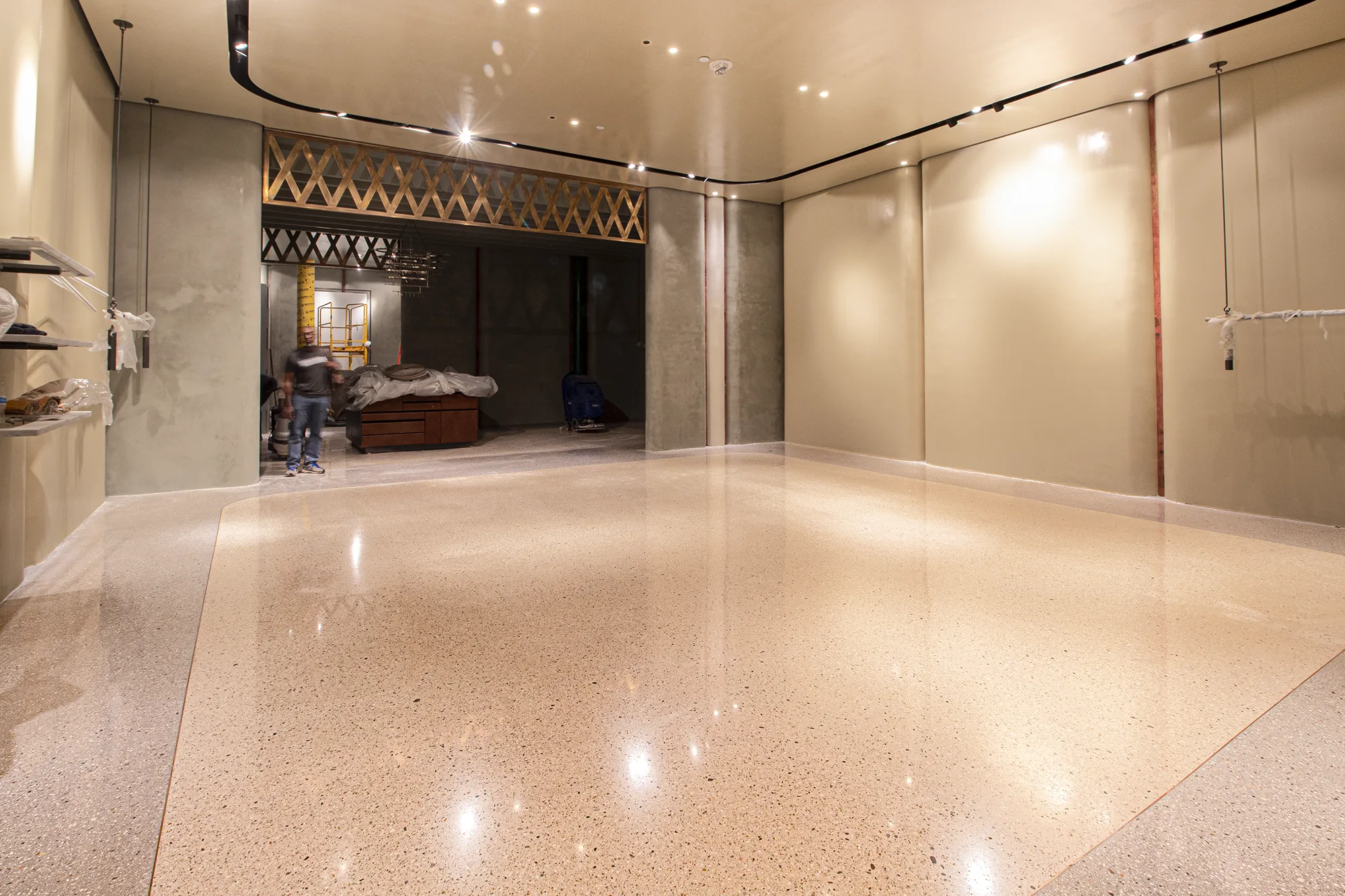
Terrazzo Floor Cleaning Basics
Dust Mop or Vacuum Your Floors Often
Dust is abrasive and can cause premature wear, especially in high-traffic areas. Regular cleaning extends floor life and reduces long-term maintenance costs.
Promptly Clean Liquid Spills
While modern epoxy terrazzo binder is highly stain-resistant, the marble chips in the floor remain slightly porous. Allowing spills to dry can stain aggregates and discolor wax or sealers, leading to costly repairs.
Use pH-Neutral Cleaners
Always choose a pH-neutral cleaner designed for hard surfaces. Acidic or alkaline cleaners can dull terrazzo and accelerate wear. Ensure cleaners are residue-free to avoid creating slippery floors.
Don’t Over-Wax Terrazzo Floors
Some terrazzo floors require topical wax, but overuse can trap contaminants and make surfaces overly slick. A penetrating sealer is generally a better option. When in doubt, consult a local terrazzo contractor.
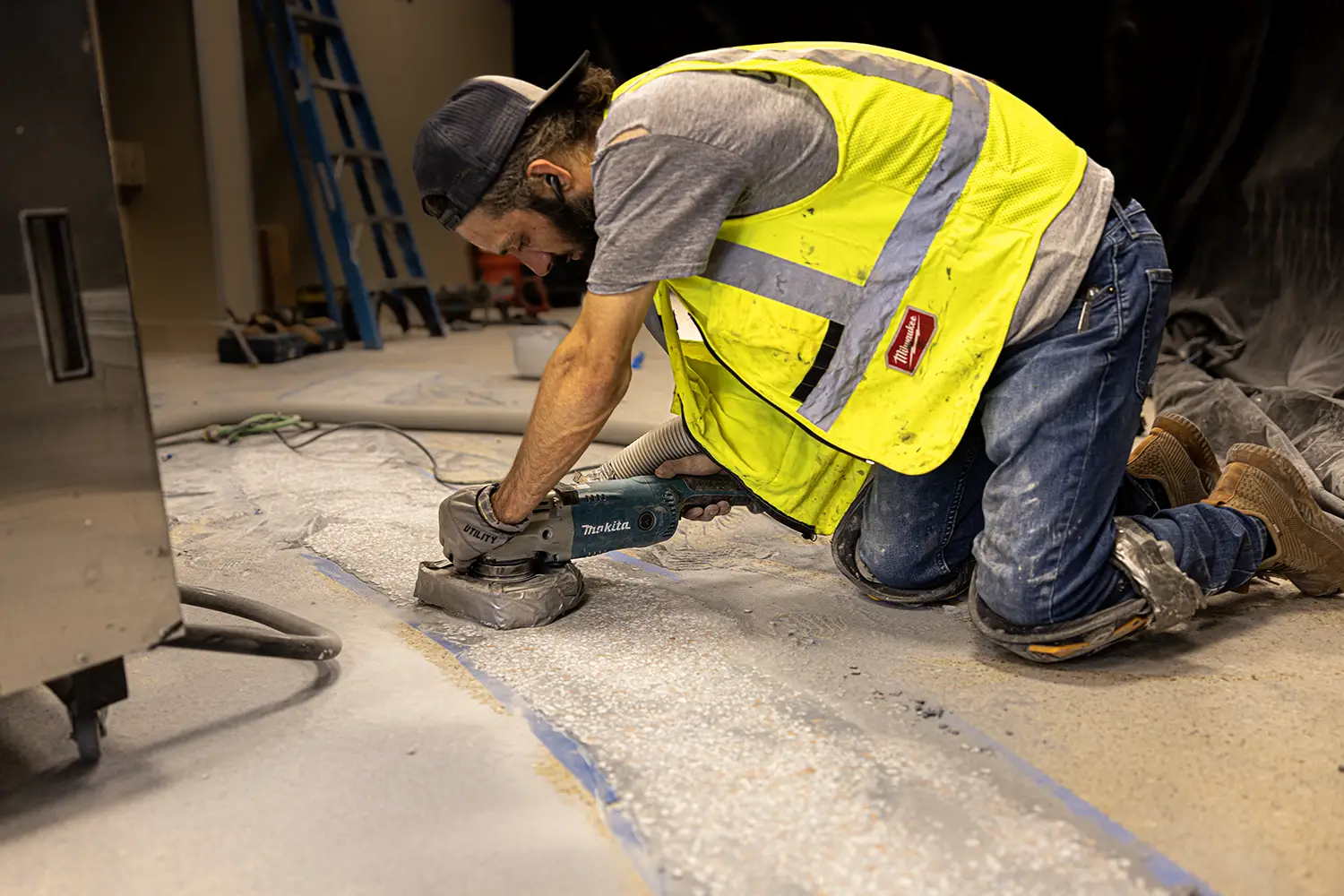
Terrazzo Floor Maintenance Schedule
Daily Maintenance
Dust mop, or sweep terrazzo floors daily. Keeping hard flooring systems free of contaminants is essential to reduce premature wear and keep floors from becoming slippery. Use Robot vacuums designed for hard surfaces for residential or small commercial installations.
Weekly Maintenance
Wet mop terrazzo floors using a dilute cleaning solution intended for terrazzo flooring systems. Auto scrubbers with an attached white pad may be used for larger cleaning jobs. Always use a cleaning solution that fully rinses from the floor. The build-up of cleaning products can make terrazzo floors slippery.
Biannual Maintenance
Inspect terrazzo floor sealers twice yearly for wear. If worn, strip and reapply using a specialized terrazzo system. If your floor’s appearance has changed since installation, contact us for a free consultation—delaying maintenance may lead to costly restorations.
Our Clients




















Blog
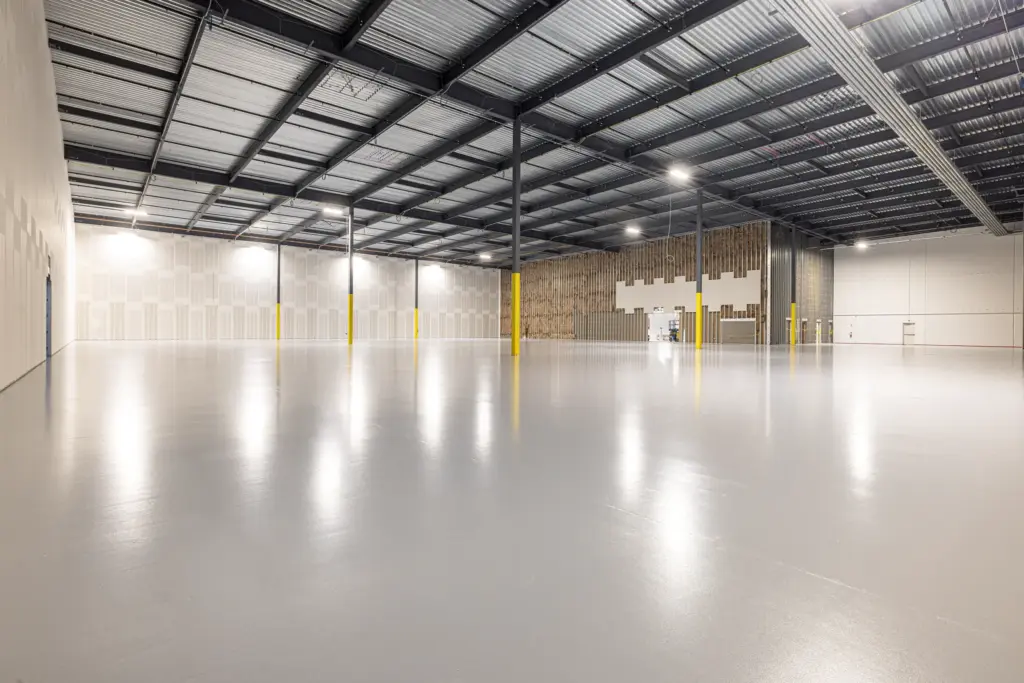
Project Highlight: 34,000 Sq. Ft. ESD Epoxy Installation in Dallas, Texas
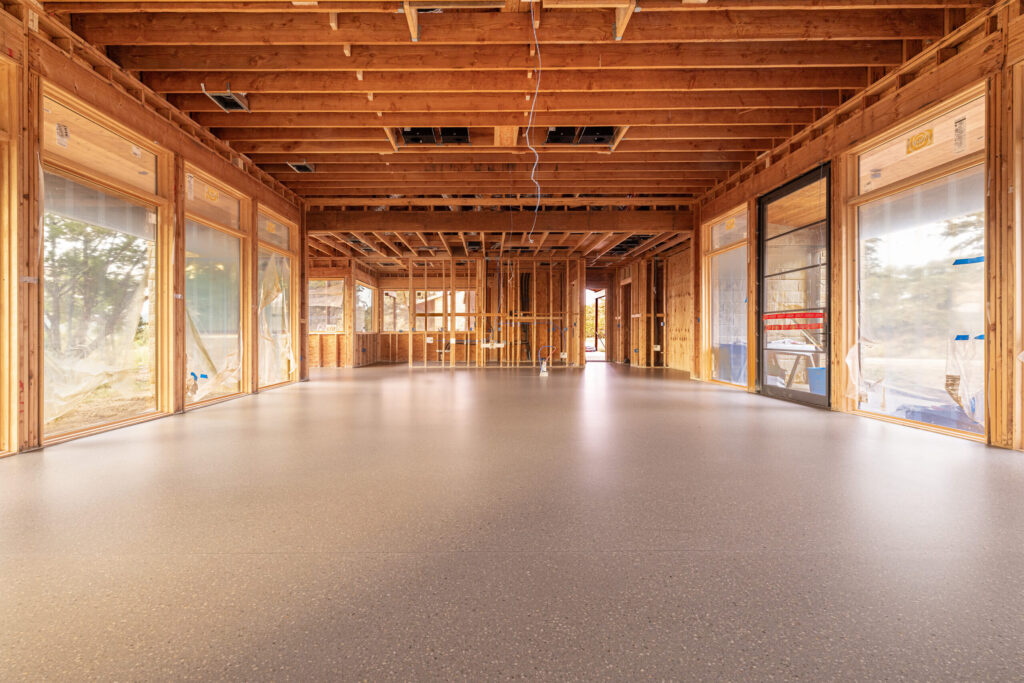
Project Highlight: New Residential Terrazzo Floors in Fort Worth, Texas
